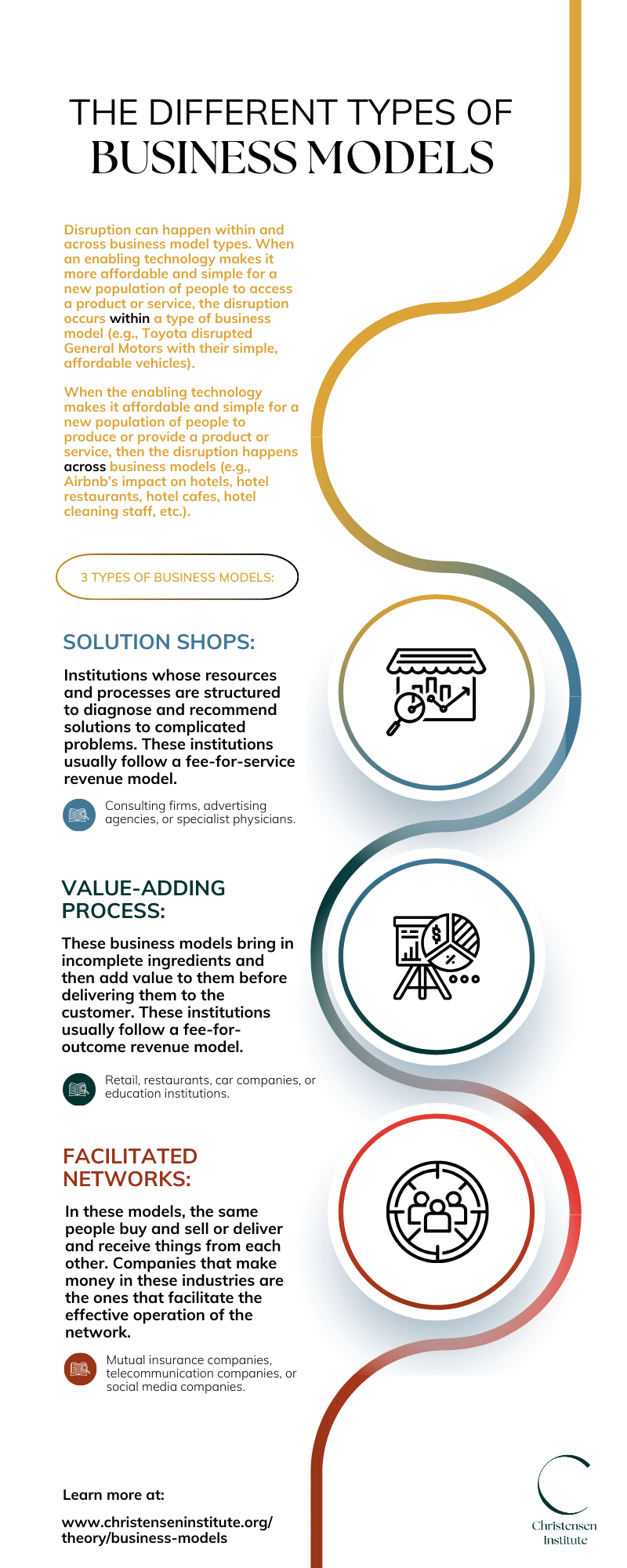Infographic: The different types of business models
Disruption can happen within and across business model types. When an enabling technology makes it more affordable and simple for a new population of people to access a product or service, the disruption occurs within a type of business model (e.g., Toyota disrupted General Motors with their simple, affordable vehicles).
When the enabling technology makes it affordable and simple for a new population of people to produce or provide a product or service, then the disruption happens across business models (e.g., Airbnb’s impact on hotels, hotel restaurants, hotel cafes, hotel cleaning staff, etc.).
3 types of business models:
Solution shops:
Institutions whose resources and processes are structured to diagnose and recommend solutions to complicated problems. These institutions usually follow a fee-for-service revenue model.
Example: Consulting firms, advertising agencies, or specialist physicians.
Value-adding process:
These business models bring in incomplete ingredients and then add value to them before delivering them to the customer. These institutions usually follow a fee-for-outcome revenue model.
Example: Retail, restaurants, car companies, or education institutions.
Facilitated networks:
In these models, the same people buy and sell or deliver and receive things from each other. Companies that make money in these industries are the ones that facilitate the effective operation of the network.
Example: Mutual insurance companies, telecommunication companies, or social media companies.
Learn more at: www.christenseninstitute.org/theory/business-models


